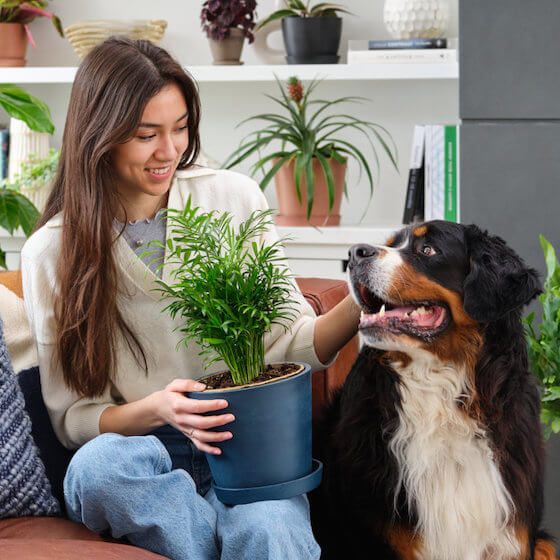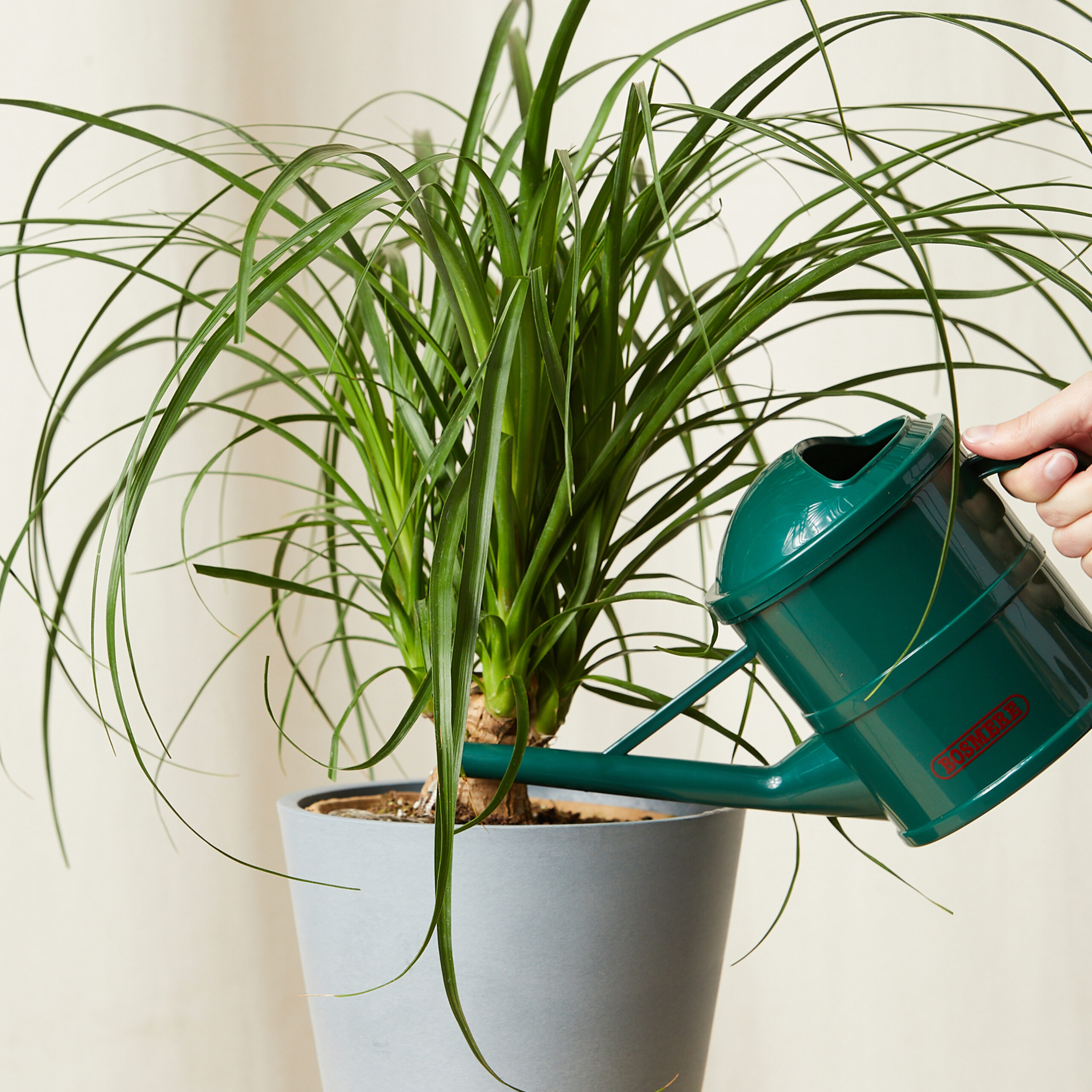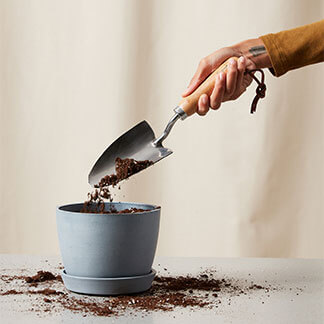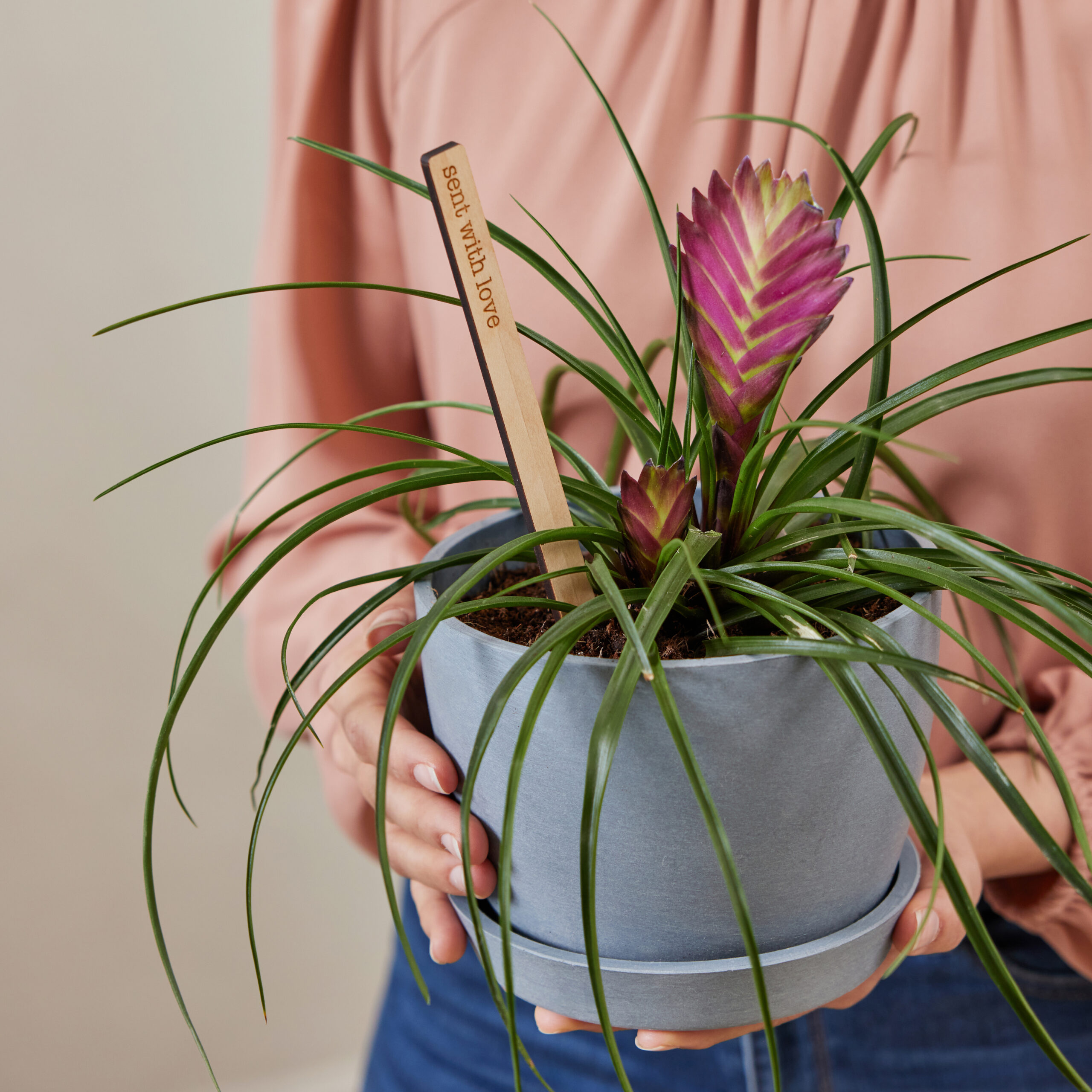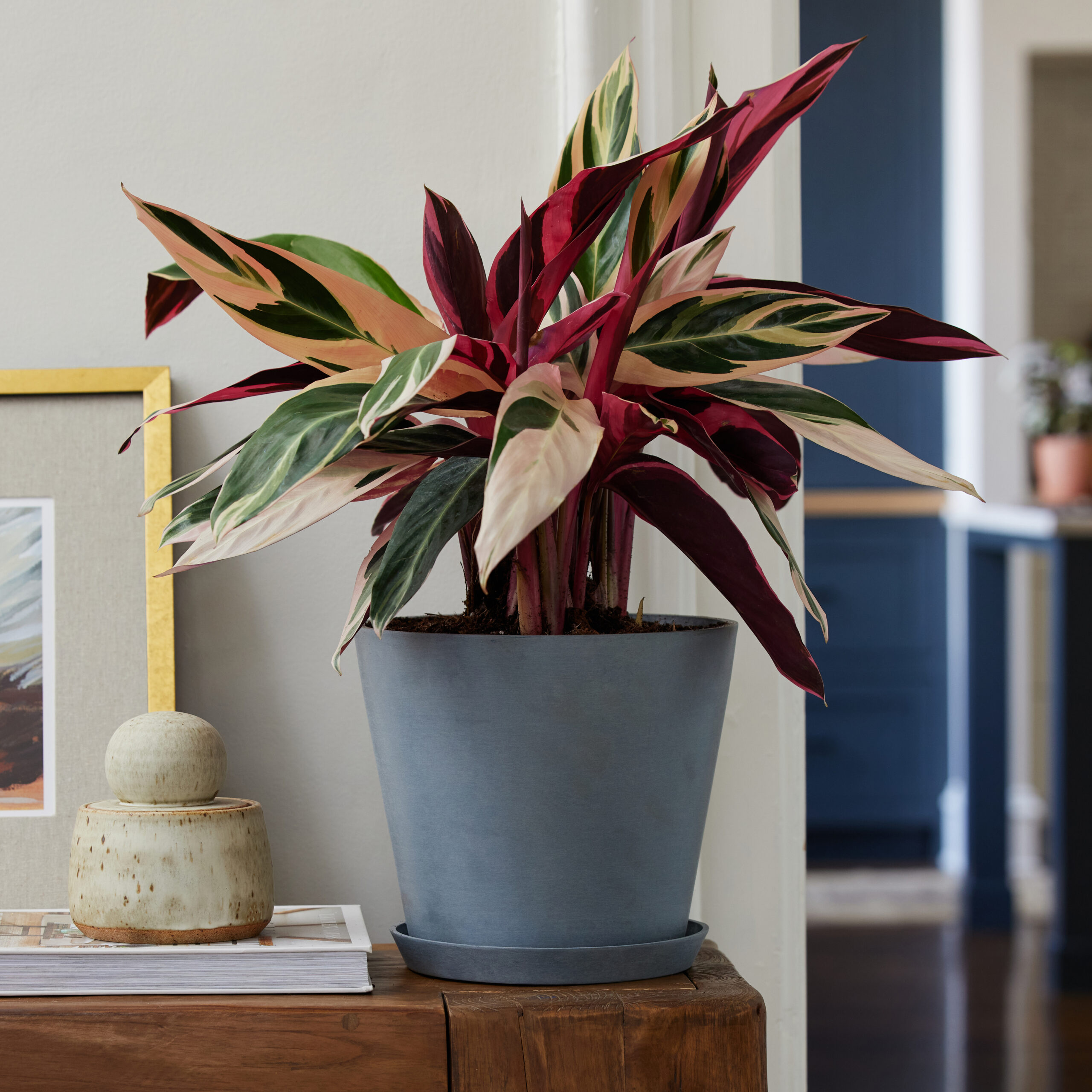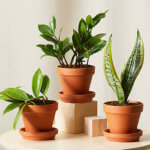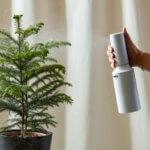1. Incredibly Dry Soil
The leaves on your Calathea can curl for several reasons, but the most common culprit is dry soil. Your Calathea loves soil that stays nicely moist, so it’s best to avoid overwatering or letting it dry out too much. A good rule of thumb is to water when the top 1 to 2 inches of soil feel dry.
If you happen to forget and the soil dries out completely, don’t worry. Your Calathea might show it by drooping, limp leaves or browning edges. When that happens, giving the soil a good, thorough soak will help bring your plant back to life.
Here’s How to Soak Your Calathea:
- Place your plant in your sink or tub without the saucer. Fill your basin up with about 3-4″ of water. Make sure the water isn’t hot!
- Allow your plant to soak up water through the drainage hole in the bottom of the pot for at least 45 min.
- Feel the top of the soil after your plant has been soaking – has the water reached the top 2-3” of soil?
- If not all the soil feels saturated, water your Calathea slightly from the top of the soil to help speed up the saturation.
- When your plant’s soil is evenly damp, drain the sink/tub and allow the plant to rest while it drains thoroughly. Place the plant back on its saucer and back in its proper spot.
2. Water Quality
If the curling continues after you’ve regulated a watering schedule, another common reason your Calathea’s leaves are curling could be due to your tap water. Tap water contains salts, chlorine, minerals, and fluoride — all of which can build up in the soil of your plant causing the tips of the leaves to burn, turn brown, and curl up.
One way you can remedy this is to use a water filtration system. If you do not have a filtration system available, leaving your water in an open container or sink overnight before using can help relieve some of the chlorine.
3. Temperature
Make sure your plant is not in a drafty area or in the path of heating and cooling vents. Leaves will curl if the plant is cold, or excessively dry from constant warm airflow.
4. Not Enough Humidity
Your Calathea is a tropical plant, so it will thrive in more humid environments. Increase the humidity around your plant by misting the leaves on a regular basis, using a pebble tray, or moving a humidifier nearby.
For an easy boost, use our autonomous plant mister to mimic your Calathea’s leaves’ natural tropical environment.
5. Overwatering & Root Rot
Overwatering causes several issues, the most serious of which is root rot. Soggy soil damages the plant’s ability to absorb water in the future. If the soil is spoiled, you’ll need to repot your Calathea. In this case, curling leaves are a sign that your plant is really struggling.
You can check for overwatering and root rot by feeling and smelling the roots and soil. Gently remove your Calathea from its pot and shake off the soil to inspect the roots. Healthy roots should be firm and white. If you notice any brown, mushy roots or a foul smell, those roots are rotten and need attention.
To safely prune damaged roots without harming your plant, use high-quality pruning scissors like the Sowvital Gardener’s Secateurs. These handmade Japanese secateurs feature a special coating that keeps the blades sharp and rust-free, ensuring clean cuts that won’t damage your Calathea plant.
After pruning, repot your Calathea in fresh, well-draining soil and adjust your watering to help it recover and stay healthy.
6. Lighting Issues
Direct sunlight isn’t your Calathea’s friend — it can actually harm the plant over time. If you notice the leaves curling up and looking dry, it might be a sign they’re getting too much sun. Those curled leaves can sometimes look like they need water, but it’s really the sun causing the trouble.
7. Pests
Some pests cause Calathea leaves to curl. Spider mites, aphids, and mealybugs suck sap from the plant, causing:
- Leaf curling
- Stripping and webbing (spider mites)
- Sticky residue (aphids)
- Cotton-like white masses on leaves (mealybugs)
- Other leaf distortions
If you notice multiple issues appearing at once, pests might be the cause, so it’s best to keep a close eye on your Calathea for early signs of infestation. To treat them, try gentle solutions like plant-safe soap spray and neem oil.
What To Do When Calathea Leaves Curl
For the most part, curled Calathea leaves are just one sign that something has gone wrong. When your leaves begin curling or drying, you need to diagnose and treat the problem like a doctor.
Let’s break it down step by step:
- Check moisture levels in the soil.
- See whether water is draining properly.
- Monitor temperature changes over time and avoid sudden temperature shocks.
- Measure humidity levels in the air and adjust the space for moderate humidity.
- Check the roots for root rot.
- Gauge the directness and amount of sunlight throughout the day and move the plant if necessary.
- Check for signs of pest infestation and treat accordingly.

